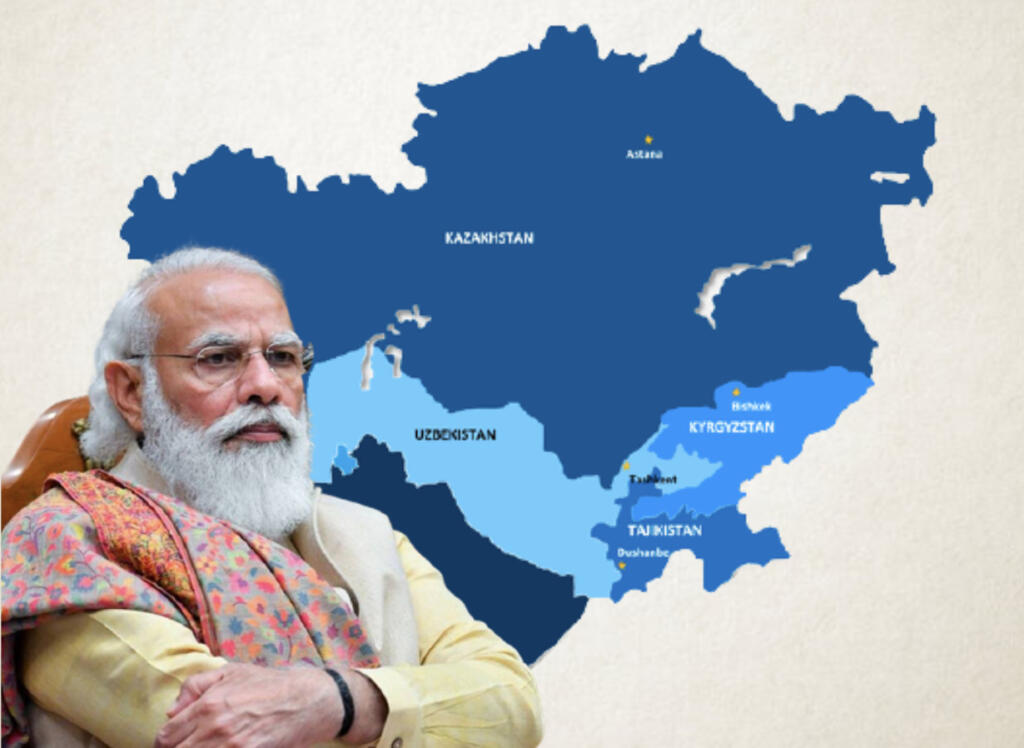Central Asia is now in the middle of an intense diplomatic tussle between India and China. While the five post-Soviet Republics in Central Asia have been close to Moscow, and Central Asia has been traditionally described as a part of Russia’s privileged sphere of influence, Beijing has been trying to eat into Russian influence in the region. However, India seems to be coming to the aid of its friend Russia by competing with China for greater influence in Central Asia.
India invites heads of Central Asian Republics to its Republic Day Parade 2022:
In a sharp diplomatic move by the Modi government, India has invited heads of State of Uzbekistan, Kyrgyzstan, Turkmenistan, Kazakhstan, and Tajikistan for attending the Republic Day parade 2022 in New Delhi. An official source told ANI, “Formal invitations have been sent to the heads of states and their replies are yet to be received.”
The move is likely to reassert Prime Minister Narendra Modi’s ambition of developing close ties to Central Asia. In 2015, PM Modi had visited all five Central Asian Republics, and throughout his leadership, New Delhi has advocated stronger cultural, financial, and diplomatic relations with Central Asian nations. In fact, India’s decision to construct the Chabahar port in Iran was partly guided by its desire to develop better connectivity to Central Asia.
Why Central Asia is important for India?
Located in the middle of Eurasia, the landlocked Central Asia forms a part of India’s extended neighbourhood. Its geographical proximity, strategic location, and historical affinity make the region a crucial part of India’s diplomatic outreach.
However, India’s outreach to Central Asia was curtailed by Pakistan’s unwillingness to let India trade with the landlocked region via its territory. Also, China’s aggressive posture in the region has been a cause of major concern. Beijing invested heavily in its Belt and Road Initiative (BRI) projects in Kazakhstan and other Central Asian Republics, in a bid to develop its stronghold in the strategic region.
Read more: China is smuggling missiles in shipping containers to carry out Trojan Horse-style warfare
This is where the Chabahar port becomes extremely important. In 2015, India signed MoUs with Iran to develop the Chabahar port in the Shi’ite nation’s Sistan-Baluchistan province. Most Central Asian leaders see the Chabahar port as an opportunity to diversify their economies and to cut dependence on China, which is trying to take over the entire region with its Belt and Road projects.
How India can kick China out of Central Asia?
Indeed, Central Asia is presently vulnerable to Chinese influence. Kazakhstan, the largest country in the region, is labelled as the “buckle” of Beijing’s BRI. In fact, China is also building the world’s largest “dry port” at Khorgos on the Sino-Kazakhstan border. This is designed to serve as China’s gateway into the Central Asian country.
Read more: China’s Evergrande finally defaults and foreign investors may never get their money back
Apart from Kazakhstan, Kyrgyzstan and Tajikistan already owe a bulk of their foreign debt to China. Turkmenistan is also completely dependent on Beijing, as the latter purchases 80 per cent of its gas exports. And similarly, Tajikistan had to lose 1,158 square kilometres of its ‘disputed’ territory to China, largely due to China’s ‘debt trap’ policies.
Yet, there are certain crucial openings for New Delhi in the landlocked region:
- There is growing anti-Chinese sentiment in the region, with Central Asian countries demanding greater local participation in BRI projects in the region.
- Xinjiang shares borders with both Kazakhstan and Kyrgyzstan, and Beijing has also incarcerated roughly 22,000 ethnic Kyrgyz and 10,000 ethnic Kazakh peoples in Uyghur concentration camps in Xinjiang.
- The resurgence of the Taliban in Afghanistan and China’s support to the Islamist group allows Central Asia and New Delhi to rework their ties.
Central Asia faces all kinds of threats from China, related to their local economies and security interests. The regional leaders look towards India as a benevolent partner that can reduce their dependence on Beijing. India, on the other hand, understands that it must counterbalance Chinese expansion in order to safeguard its own interests in Eurasia, and this is what makes India’s invitation to Central Asian heads of State an incredibly crucial development.
